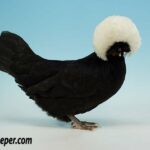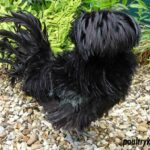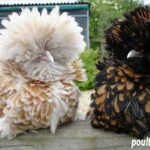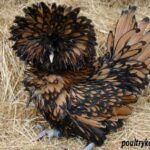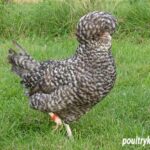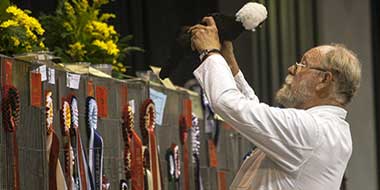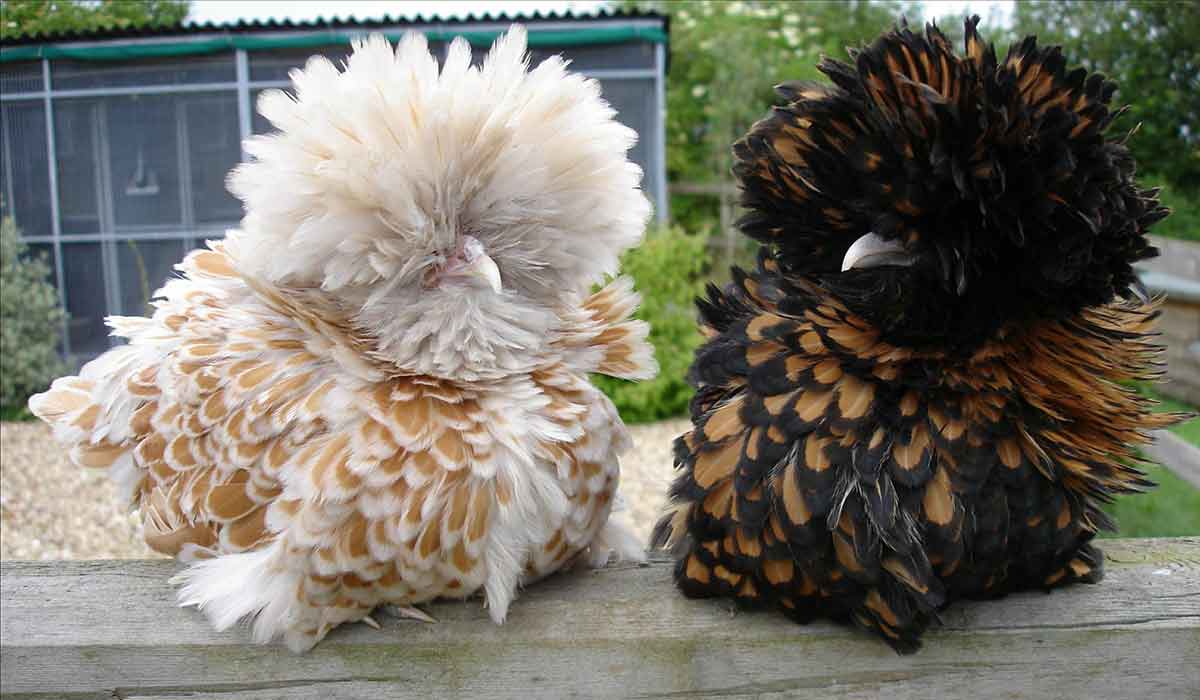
Breed In
Focus
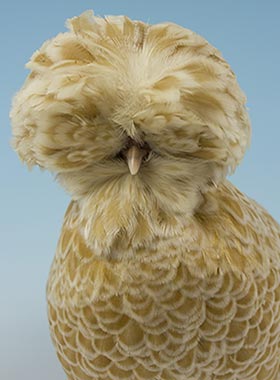
In this Breed In Focus, Lawrence looks at Poland chickens (or ‘The Polish’ as it’s called in some parts). With a remarkable crest of feathers, it’s an outstanding breed and was one of the first to be standardised in Great Britain.
The Poland is an old breed, although its ancestry is unclear due to many countries having laid claim to its making. Some books connect the type with the Paduan (Patavinian) fowl. What is clear is that this was originally a utility breed for both table and egg, with the bantam (or miniature) varieties coming along in the late 1800s due to several matings with different breeds to reduce size.
A shame really as the bantam varieties we see are probably more genetically mixed up than their large counterparts.
First shown in London in 1845, the Poland was one of the first breeds to be standardised in 1865. Did they originate in Poland? Possibly, but their name is more likely to result from the ‘poll’ or ‘poland’ sat on top of their head (the knob and crest). That makes them Polands rather than Polish. Snobbery on my part perhaps, but perhaps a more fitting reason than simply a country that they at one time may have proliferated in.
In some parts of the world, Polands are referred to as ‘Dutch,’ which does little to help with this magnificent breed’s naming.
General characteristics
Recognised instantly by its massive crest, the exhibition Poland is truly a sight to behold. Sprightly and erect, birds have a relatively long body, similar to a long ‘u’ with a full neat tail carried somewhat low.
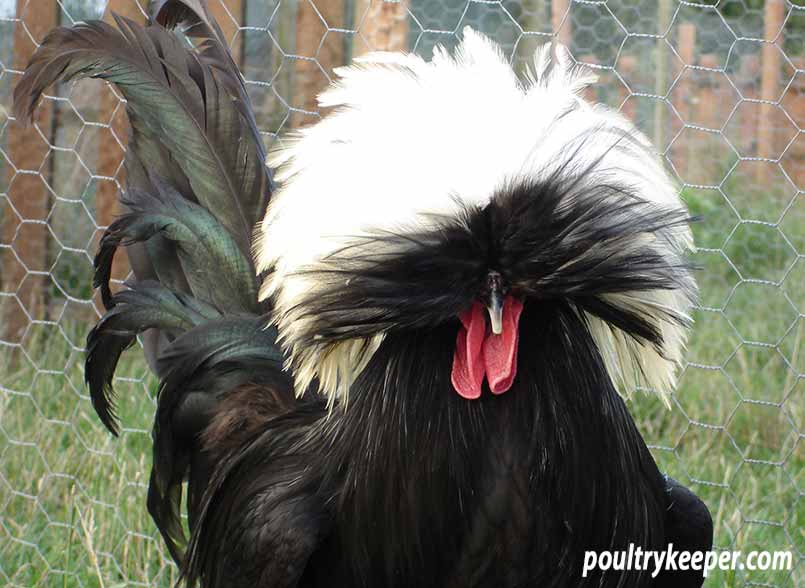
The crest perches on a bony skull protuberance referred to as the knob: in the female, the crest feathers form a neat globular ball, while the male feathers fall like a shawl around his head. The distinctive horny nostrils are wide and cavernous. The white-crested black is without muffling, and the wattles are somewhat more significant, as opposed to the other colours which do possess muffs and usually have small wattles.
This breed is a relatively high maintenance bird with several conditions being made worse by its crest, such as lice infestations and eye problems (See Diseases Common to Polands for further information). However, there is a movement within the breed club at home and abroad to reduce the crest to a more practical size and shape.
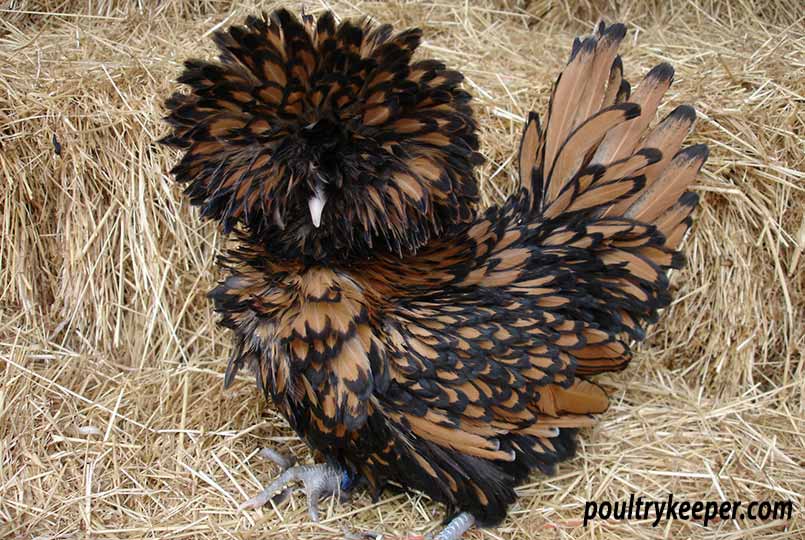
Bantam Polands do make good pets and will, like Pekins, run to their handler for food. Ensure that drinkers and feeders do not allow the birds to soil their crests, which can be taped up or cropped if they are kept outside to free-range.
Standard colours include chamois (buff laced), gold, silver, self white, self black, self blue, white created black, white-crested cuckoo and white-crested blue.
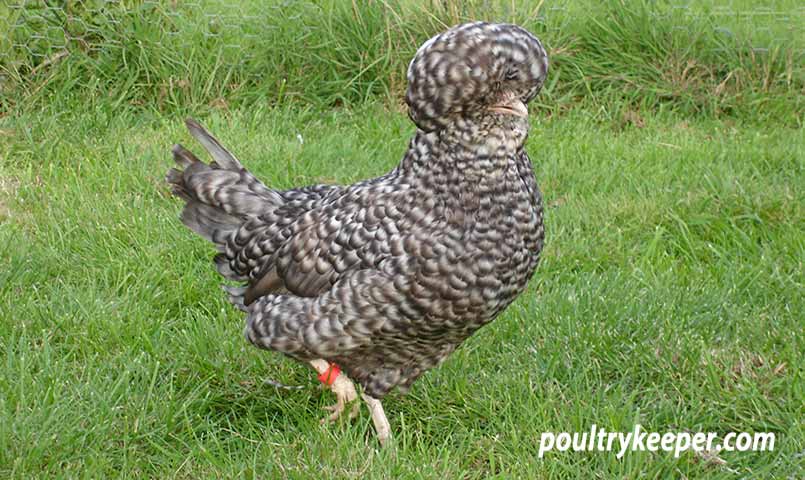
The head is very delicate in birds with larger crests due to the large cranial cavity (seen externally as the knob on top of the head). If alarmed, particularly if approached from above, the bird will fly upwards and knock itself out.
Contrary to popular belief, this is a hardy breed and can be kept outside as long as you provide shelter from the rain and cold, as the thin skull is susceptible to chilling, and pneumonia can result.
Genetics
Like most other breeds, there are some traits which are specific to Poland chickens, and attention needs to be given to them to get the best birds if you are exhibiting:
The black colour should be beetle green, not purple. If your birds are showing too much purple, try crossing your least purple female with a male showing some degree of red in the breast, wing bars or hackles – the red will decrease the amount of black and help improve the green sheen.
In general, try to cross a dull black female with your male to prevent too much red reduction. A bird with white feather quills on the body should be rejected from the breeding pens.
If breeding frizzle birds, do not mate frizzle to frizzle as this narrows the feather. Better to breed plain to frizzle to preserve the width of the feather.
Breeding Tip: Blue is diluted black. Mating will produce:
- Blue x Blue – 25% black, 25% splash, 50% blue. Used to produce good blue birds, colour may become patchy in successive generations.
- Black x Blue – 50% black, 50% blue. Used to produce good blue birds, plus males from this mating will reduce patches from blue/blue matings.
- Splash x Blue – 50% splash, 50% blue
- Black x Splash – 100% blue. Birds may vary in colour, and the blues produced are often inferior.
The white-crested black should have a black band at the front of the crest (the butterfly).
Never use birds with crests that come in front of the nostrils or sit off-centre / lean-to one side. Males inherit their combs from the mother’s side so to keep a comb off a cockerel, use hens with small combs.
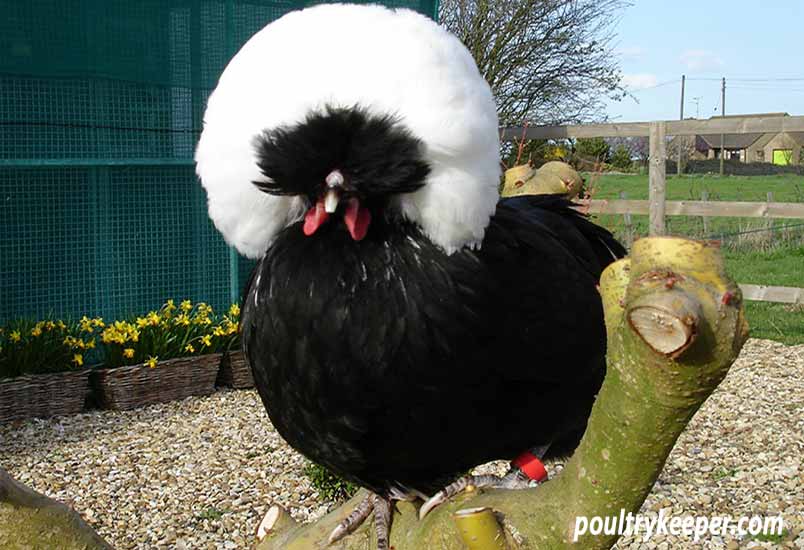
Poland eggs and incubation
Unfortunately, Poland chickens are not a sitting breed; artificial incubation is the best method to hatch replacements. However, like Silkies, hatchability is poor with some exhibition strains, so a cabinet incubator is your best option.
Eggs should be collected a couple of times a day to prevent egg eating (for some reason, Polands do like to peck an egg) and stored in a cool room.
Incubation is no different to any other breed; it is the hatching that may take a little extra vigilance.
Many of the exhibition lines have a thickened membrane in the shell which, combined with incubation humidity problems and the enlarged head dome, can make hatching difficult. If, after pipping, no progress has been made within a few hours, you may want to intervene and help the chick out, depending on your ethos.
In the past, I have helped out frizzles but left white-crested blacks – possibly the combination of genetics makes the frizzles less likely to hatch. Only your preference and experience of the line can guide you here on what is best for you.
Exhibiting your Poland
Another of the great exhibition breeds and certainly one of the most rewarding, a good Poland will always make it to the larger shows’ championship row.
Preparation is time-consuming and fraught with problems but is worth the effort when the bird is presented well.
Breed profile
Uses: Exhibition / Pets.
Egg colour: White.
Origin: Europe.
Weight: Cock: 2-3 Kg. Hen: 2-2.5 Kg.
Bantam: Cock: 680-790g. Hen: 510-680g.
Colours: Self Black, Self Blue, Self White, Splash, Cuckoo, White-Crested Black, White-Crested Blue, White-Crested Cuckoo, Chamois (Buff Laced), Gold & Silver Laced.
Useful to Know: There are frizzled or straight, bearded and non-bearded varieties available.
Photo gallery
Books
The following books are available. Links take you to the Amazon or other sellers’ pages for the books.
- Popular Poultry Breeds – D. Scrivener – P.203
- Storey’s Illustrated Guide to Poultry Breeds – C. Ekarius P.145
- British Poultry Standards – P.243
Breed clubs
These are the breed clubs for Poland chickens:
- UK: The Poland Club
Related articles
You might be interested in these articles about Poland chickens:
- Diseases Common to Polands by Lawence Beeken
- Exhibiting Polands – The Breed Standard by Lawrence Beeken

